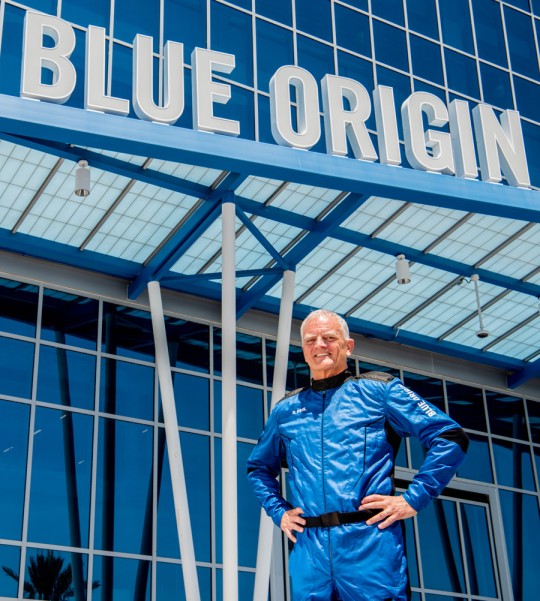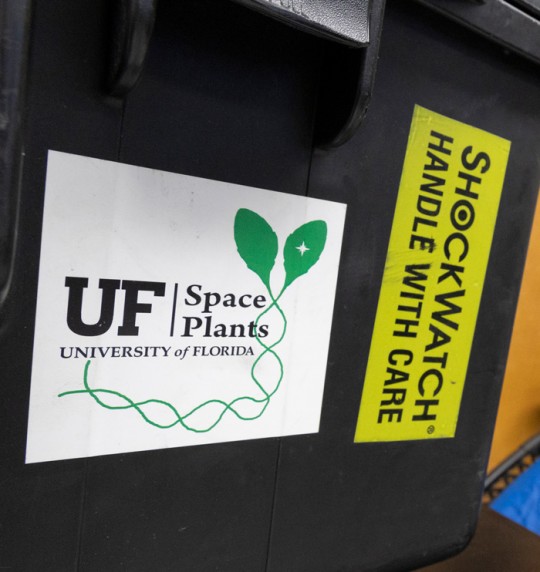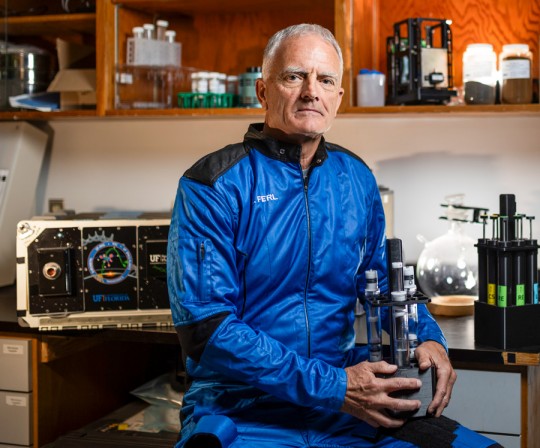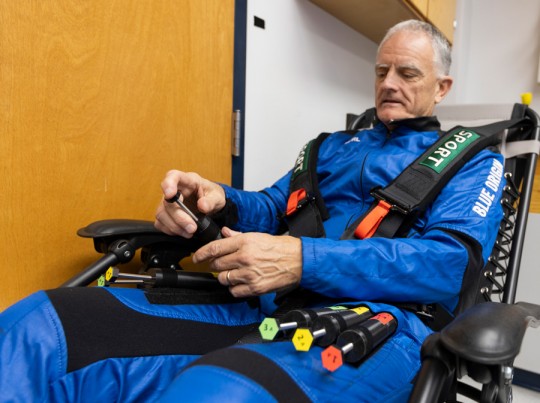University Of Florida Biologist Prepares For Space Travel Thursday
August 26, 2024
How do plants adapt when they go into space?
That’s the question the University of Florida Institute of Food and Agricultural Sciences (UF/IFAS) hopes to answer with a novel space-based experiment happening Thursday at 9 a.m. EST when a UF/IFAS horticultural sciences researcher launches with his experiment into suborbital space on a Blue Origin New Shepard rocket.
 Rob Ferl, the University of Florida Astraeus Space Institute director, will fly in the Blue Origin craft and perform the experiment himself. The experiment builds on prior research that showed a type of plant – Arabidopsis thaliana – can detect that it is in space and then change how its genes are expressed.
Rob Ferl, the University of Florida Astraeus Space Institute director, will fly in the Blue Origin craft and perform the experiment himself. The experiment builds on prior research that showed a type of plant – Arabidopsis thaliana – can detect that it is in space and then change how its genes are expressed.
“This moment is a milestone not just for the University of Florida and the Astraeus Space Institute but for an entire community of scientists who can now consider experiments in space that might have previously been viewed as impossible,” said UF Interim President Kent Fuchs. “I look forward to cheering Rob on during Thursday’s mission and to watching him make history yet again.”
This experiment will determine which genes turn on and off at various stages of flight. Although much is known about how plants respond to living in spaceflight environments, like the International Space Station, researchers know less about how plants respond molecularly as they travel to space. The experiment will provide new insights into how plants adjust their gene expression as they transition from Earth to space.
One day, plants might be an essential part of space exploration as food and air scrubbers, and understanding how they react to a space environment is the first step toward learning how to effectively grow them there.
“We envision plants will keep us alive in space or on the Moon,” said Ferl, who is also assistant vice president for UF Research. “What does it take to adapt to living in space? We’d like to know.”
Anna-Lisa Paul, co-principal investigator for the experiment, a horticultural sciences research professor and director of UF’s Interdisciplinary Center for Biotechnology Research, said researchers have only been able to see what this plant’s genes are like before and after space flight, not during.
“It’s something outside the evolutionary environment of any terrestrial species,” she said. “This is something we’re learning that has never been done before.”
 The research was funded by a grant from NASA’s Flight Opportunities program and the agency’s Biological and Physical Sciences division.
The research was funded by a grant from NASA’s Flight Opportunities program and the agency’s Biological and Physical Sciences division.
Ferl will carry the plants in specialized tubes, called Kennedy Space Center Fixation Tubes (KFTs), that have a plunger to release a preservative solution. The tubes will be Velcroed to the legs of his flight suit during the flight. Before and after the flight, they will be moved in custom transit bags designed by the UF Space Plants Lab out of blackout fabric and a golden thermal blanket.
The experiment has a second purpose: to validate that having researchers do their own experiments on flights is a valuable use of research funding, rather than relying on untended experiments or robotics. This is the first NASA-supported researcher-tended suborbital flight.
“There’s something to be said about first-hand experience,” Ferl said. “The experiment is enriched when a human mind and a human brain go with it.”
The study will look at the plant’s transcriptome, the collection of all expressed RNA that contains answers to which genes are turned on and off to change the plant to adapt in a space environment. Ferl will chemically “lock” the genes with a preservative solution to pause the plants at a moment in time during various points in the launch – just before takeoff, at the start of zero gravity, at the end of zero gravity and at landing.
Researchers will then sequence the plants’ expressed genes and compare them to an on-Earth control experiment to figure out exactly which ones were activated or deactivated during the flight.
Jordan Callaham, assistant director for the UF Astraeus Space Institute and research coordinator for the UF Space Plants Lab in the UF/IFAS department of horticultural sciences, said this will help researchers begin to understand how plants would respond on space missions, on the Moon or on Mars. But it will also give them a better idea of the fundamental properties of the chemical pathways within plants and how they respond to all novel environments.
“We’re understanding how biology responds to space on a very basic level,” said Callaham, who will be doing the on-Earth control experiment while Ferl is on the Blue Origin rocket.





Comments